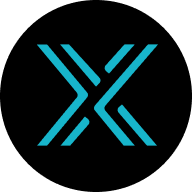
Preço de Immutable X

Informações do mercado de Immutable X
Capitalização do mercado = Oferta em circulação × Último preço

Calculadora de IMX


Desempenho do preço de Immutable X em USD
Conversões de Immutable X populares
| 1 IMX em USD | 0,41430 $ |
| 1 IMX em EUR | 0,36588 € |
| 1 IMX em PHP | 23,6391 ₱ |
| 1 IMX em IDR | 6952,51 Rp |
| 1 IMX em GBP | 0,31445 £ |
| 1 IMX em CAD | 0,57536 $ |
| 1 IMX em AED | 1,5217 AED |
| 1 IMX em VND | 10 702,66 ₫ |
Sobre Immutable X (IMX)
- Site oficial
- Documento técnico
- Explorador de blocos
Perguntas frequentes sobre Immutable X
O Immutable X resolve o problema de escalabilidade do Ethereum com a utilização da sua tecnologia ZK-rollup chamada ZK-STARKs.
Ao usar esta técnica, o Immutable X combina várias transações NFT fora da chain. Essas transações agrupadas são enviadas para a chain principal do Ethereum numa única transação, reduzindo drasticamente as taxas gas.
Compre facilmente tokens IMX na plataforma de criptomoedas da OKX. Os pares de trading disponíveis no terminal de trading à vista da OKX incluemIMX/USDT. Também pode comprar IMX com mais de 99 moedas fiduciárias ao selecionar "Compra rápida" opção. Outros tokens de criptomoedas populares, tais comoBitcoin (BTC),Tether (USDT), eMoeda USD (USDC), também estão disponíveis.
Em alternativa, pode fazer swap das suas atuais criptomoedas, incluindoXRP (XRP),Cardano (ADA),Solana (SOL), eChainlink (link), para IMX sem taxas e sem desvio de preço através da utilização deOKX Converter.
Para ver os preços de conversão em tempo real estimados entre moedas fiduciárias, como USD, EUR, GBP e outras, na IMX, visiteCalculadora conversora de criptomoedas da OKX. A bolsa de criptomoedas de alta liquidez da OKX garante os melhores preços para as suas compras de criptomoedas.
Divulgação ASG
Calculadora de IMX











